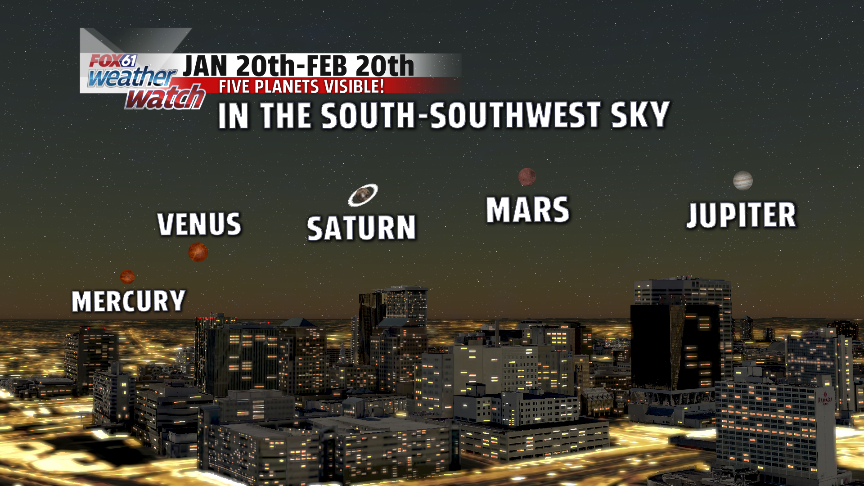Five brightest planets gather in pre-dawn sky for heavenly show
This rare sight of “fab five” planets without a telescope from January 20 to February 20 is an ideal period to experience not one but five planets lined in an early morning sky.
Starting this week, Mercury, Venus, Mars, Jupiter and Saturn are gathering together in the pre-dawn sky.
Over the course of the next 30 days, give or take a few days, five planets will be visible to the human eye. The best viewing times should be right before dawn, when Mercury is at its highest.
The reason for this rare, celestial phenomenon is that “the five planets happen to be on the same side of the sun at the same time”, Alan Duffy, an astrophysicist at Swinburne University, explained to The Guardian.
Dr. Young says Mercury is the hardest planet to see, not only because it is smallest of the five, but for how close it is to the sun.
“Venus will be very obvious in the south east and Saturn will be a little bit higher up to the right”.
MacRobert notes in a post on the site that to spot Mercury, the best thing would be to clench your fist and hold it at your arm’s length and look to the lower left of Venus by about the width of your clenched fist. “It’s the one you’re most likely to confuse with stars because it’s not as bright as Jupiter. It is very low down and it’s quite faint, and you have to catch it just before the light sky comes along and it brightens”.
If missed, the planets will again appear in August this year, but this time in the evening sky and Mercury and Venus will not be easily seen. Because all the planets sit on a single plane, and we’re looking at them from inside that plane, they will all appear to be sitting in a line.
“Venus and Jupiter will be easy to see, being the brightest objects in the sky”, Professor Fred Watson of the Australian Astronomical Observatory told The Guardian.
The entire lineup of planets spans some 110 degrees-more than half of the locally visible skyline.








